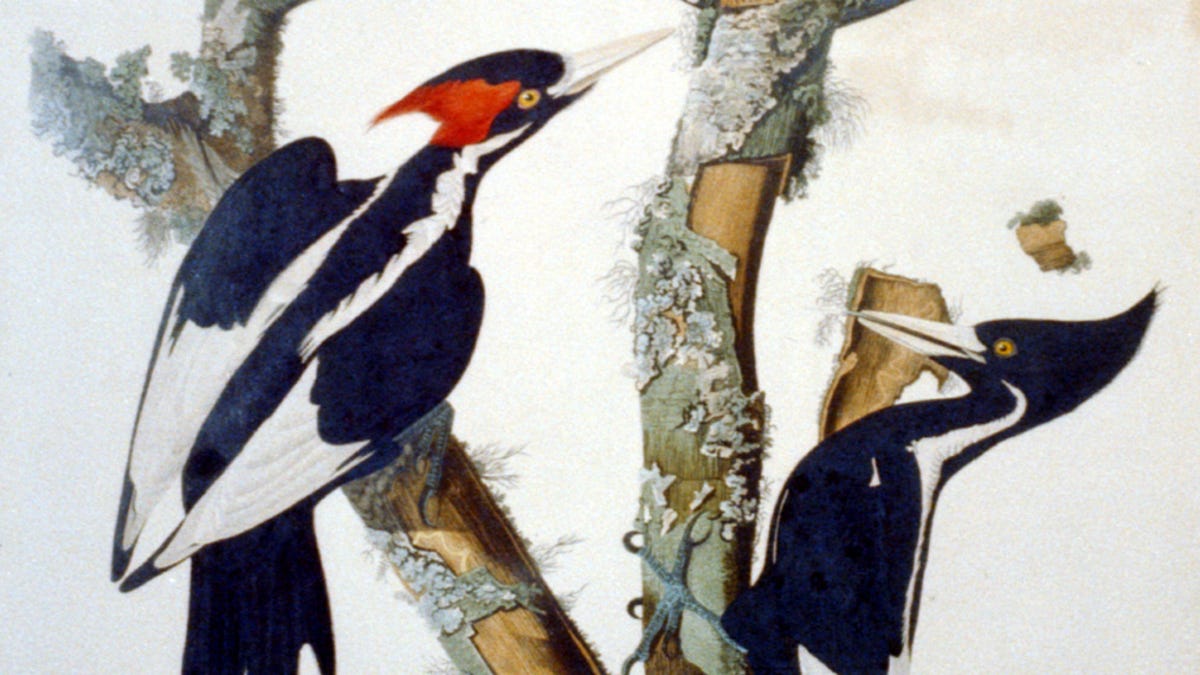US to declare 23 species extinct, including 11 birds, 8 mussels and a bat
The somber list includes the ivory-billed woodpecker and the Kauai nukupu'u, which hasn't been seen since 1899.

The ivory-billed woodpecker (left) was last seen in 1944 in Louisiana.
It's a bitter moment when the US Fish & Wildlife Service proposes delisting animals and plants from the Endangered Species Act because they can no longer be found. It means that officials are calling off the search and that the creatures are thought to be beyond saving. On Wednesday, the agency cataloged 23 species it has determined are now extinct.
The agency is seeking comments from the public on the proposal to delist the species, which include the ivory-billed woodpecker, Bachman's warbler, eight species of freshwater mussels, eight birds from Hawaii, a flowering plant and the Little Mariana fruit bat that once lived in Guam.
"With climate change and natural area loss pushing more and more species to the brink, now is the time to lift up proactive, collaborative, and innovative efforts to save America's wildlife," US Secretary of the Interior Deb Haaland said in a statement.
The ivory-billed woodpecker was once the country's largest bird of its kind. The last confirmed sighting in the US was in 1944 in Louisiana. The Fish & Wildlife Service traces the woodpecker's extinction to loss of forest habitat and to collection of the birds by humans. Bachman's warbler was a small songbird with a yellow belly that was last seen in the US in 1962.
Eleven of the 23 species are from Hawaii and Guam, "many of which had striking characteristics, such as the long curved beaks of the Kauai akialoa and nukupu'u, the haunting call of the Kauai 'o'o, and the brilliant colors of the Maui akepa and Molokai creeper," the Fish & Wildlife Service said. One of those birds, Kauai nukupu'u, was last seen in Hawaii in 1899.
While fish and mussels may not be as eye-catching as the birds, their disappearances indicate a loss of healthy stream and river systems.
The Endangered Species Act is intended to protect threatened animals and plants and to help their populations recover. Delisting these species is sad news, but the act has had a tangible impact.
"While protections were provided too late for these 23 species, the ESA has been successful at preventing the extinction of more than 99% of species listed," the Fish & Wildlife Service said.

